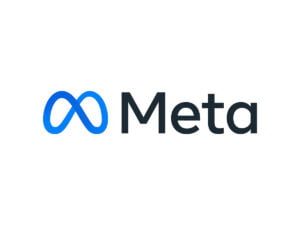By Anna Peel. Originally published at ValueWalk.

Over the last few weeks the popularity of NFTs has been debated. A metaverse land sale sparked a frenzy that temporarily overwhelmed the Ethereum cryptocurrency. The demand to become a landlord in the metaverse, resulted in a sale of 55,838 Ether, or about $158 million, sparking criticism and providing fodder for skeptics that the metaverse is a speculative bubble.
Q1 2022 hedge fund letters, conferences and more
So far, popular perceptions of the metaverse are so vast, so intimidating, that only billion-dollar corporations like Facebook, or Epic could afford to develop and implement the necessary infrastructure of a shared virtual universe where we live, work, and play. But what do we want (and need) in a metaverse that will inevitably be shaped by corporations and mainstream culture?
In the below commentary, Jonathan Victor, NFT and Web 3 Storage Lead at Protocol Labs, offers his insight on the incident and why it is important that we build an open ethical metaverse in the future.
Why Did This Happen?
- As background, sending a transaction takes up “block space” on blockchains. In a given block, there is some amount of computation that can be performed, and the unit of “gas” is how you can size the complexity of the transaction in question. More complexity to a transaction, more gas consumed.
- In periods of high demand, the price of gas (using the network) goes up – for non-complex transactions this is less of a problem – but for more complicated ones this scales dramatically (during the mint process, people were paying thousands).
What Could Yuga Have Done Differently?
- As a number of commenters online have pointed out, the Yuga Labs team missed a number of opportunities to optimize their contract. This could have shaved off millions in wasted fees – though it seems likely they didn’t anticipate the overwhelming demand they had (even though they had a count of the number of KYC’D wallets and a cap per wallet).
- As many in the Ethereum community have pointed out, using the “L1” of Ethereum is going to only get more expensive as more users onboard. The Ethereum community has been pushing rollups like Immutable (built on Starkware), Optimism, and Aribtrum as solutions that keep fees low while maintaining similar security to the Ethereum network.
- It’s not entirely clear why Yuga chose to do their minting directly on the base layer – but had they chosen to use an L2, the cost could have been substantially lower.
What Is In Store For The Future?
- Clearly, there is still overwhelming demand for top projects in the space – and for the teams building, there are an incredible amount of resources available.
- – Unfortunately, there is still a pretty big gap in education on how to best use these protocols. We wouldn’t use a sledgehammer to hang a picture, and we shouldn’t use an L1 like ETH for high volume, low fee transactions.
- Zooming out though – it’s important to note that Yuga is playing a critical role in providing a credible alternative to closed metaverses. Despite the chaos of the mint, they’re validating that we can build 9 figure open metaverses, where users own their digital objects (secured by a credibly neutral base layer) – versus an entry in a company’s database (which may become worthless if they decide it’s no longer profitable to support said ecosystem.)
- To underscore this last point – when you pay a 50% fee to Meta, you are sole-sourcing many services (the “property rights” of the object – which they maintain in a database, the “interoperability” of the object – which they control with the APIs they expose, and the “accessibility” of the object – which they control by using their servers). In the case of NFTs – we’re actually seeing an unbundling of these services – where decentralized networks are giving users more control. The “property rights” are enforced by the blockchain (e.g. ETH) – which defers to users and their private keys for showing ownership. The “interoperability” is guaranteed through the public nature of the blockchain – anyone can read the chain and build an experience that implements those NFTs.The “accessibility” of the object can be secured with decentralized storage (e.g. IPFS and Filecoin) – allowing the content to be served not only by a single company, but also by the user and their devices, or by neutral service providers.
Updated on
Sign up for ValueWalk’s free newsletter here.



